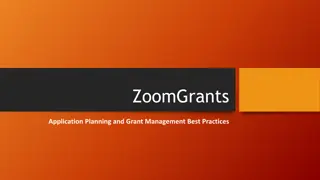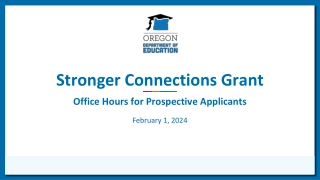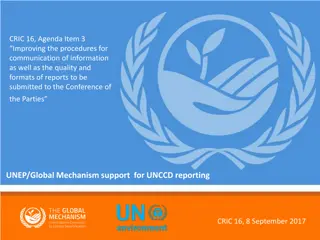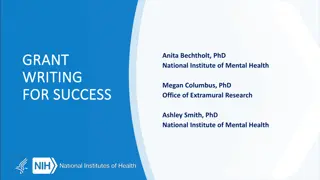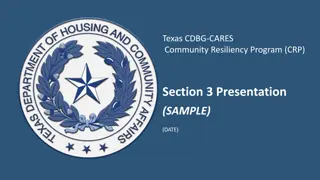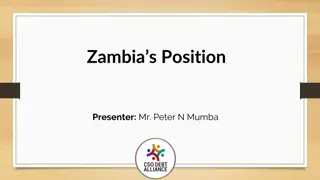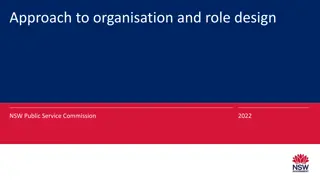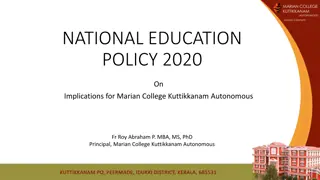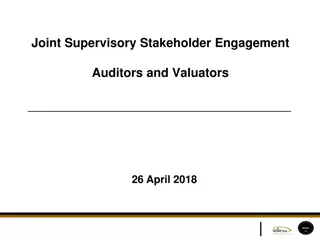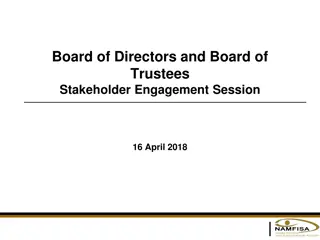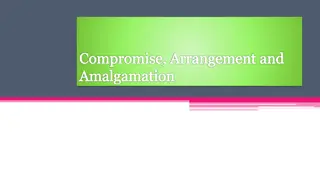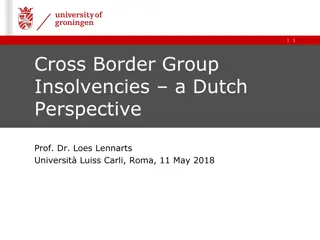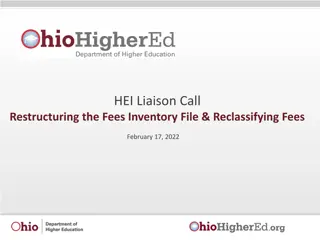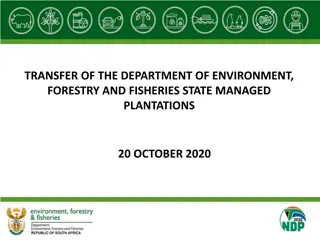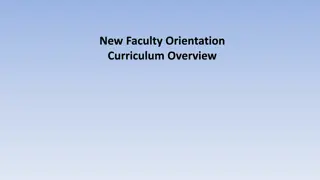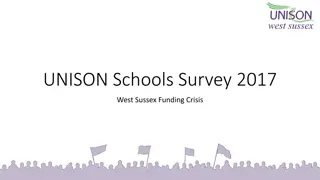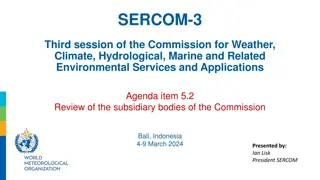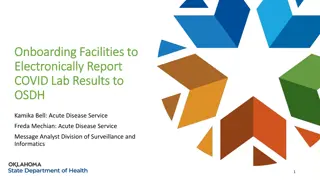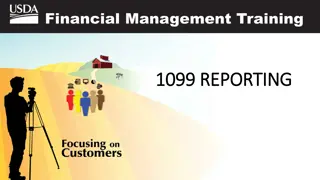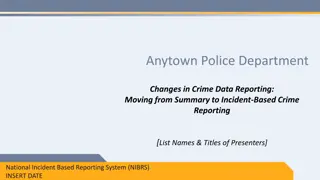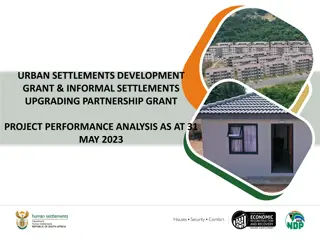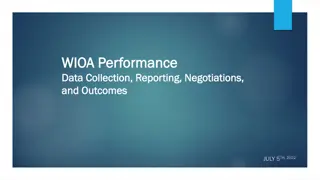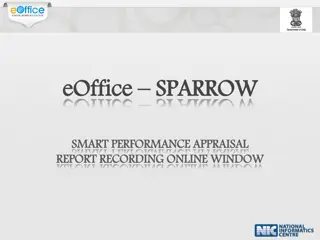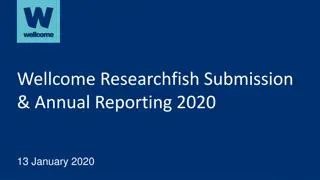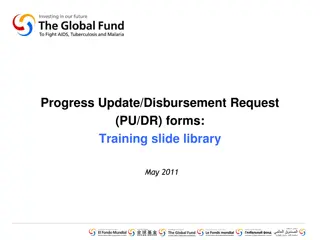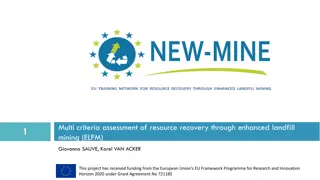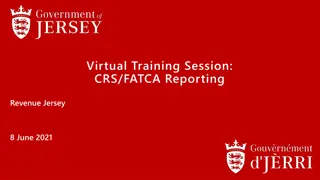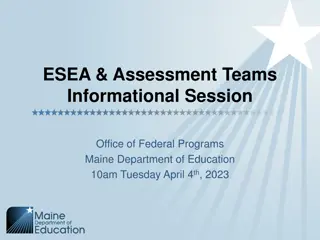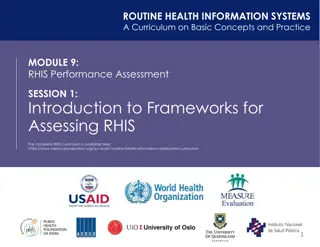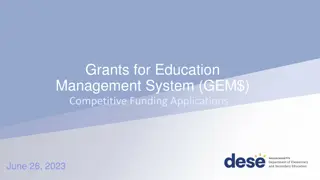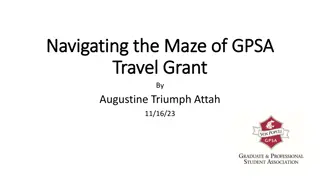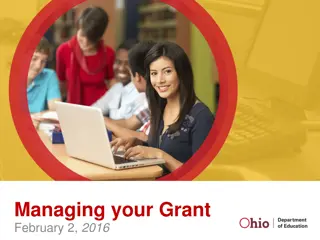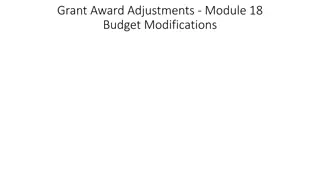Restructuring LSTA Grant Reporting for Enhanced Performance Assessment
Redesigning the reporting process for LSTA grants to transition from open-ended narrative fields to structured, closed-ended fields, aiming to improve comparability, enable evidence-based decision-making, and foster collaboration among state library agencies.
Uploaded on Sep 15, 2024 | 0 Views
Download Presentation

Please find below an Image/Link to download the presentation.
The content on the website is provided AS IS for your information and personal use only. It may not be sold, licensed, or shared on other websites without obtaining consent from the author. Download presentation by click this link. If you encounter any issues during the download, it is possible that the publisher has removed the file from their server.
E N D
Presentation Transcript
LSTA Grant Workshop Jennifer Peacock, Administrative Services Bureau Director David Collins, Grant Programs Director Mississippi Library Commission September 24, 2015
Redesign of Reporting Old Reporting: Open-ended narrative fields. New Reporting: Structured, survey-like closed-ended fields. Inadequate comparability across project fields. Comparability across projects for assessing performance. One-way reporting process centered around compliance. Two-way reporting process centered around access to project information. 2
New Reporting: Reasons and Benefits Reasons New federal guidelines Better data drives better stories Data transparency Benefits Bi-directional data now possible Evidence-based data and stories Facilitate collaboration, knowledge sharing, foster/support communities of practice 3
Goals Build more dynamic/easy-to-use tool to capture better Grants to States data Standardize reporting process to increase comparability of project reports Highlight (and learn from) projects assessed Share information to facilitate state library agency peer learning; build a catalogue of library program information; improve data for policy analysis and in-depth evaluation work
Previous MLC Grant Categories: Competitive Applications Services/Resources and Libraries as Community Anchors Public Librarian Scholarship Program Non-Competitive Applications Consulting Assistance Focused Development Focused Technology Professional Development
Now, there are only two categories: Competitive Application process opens January 2, 2016 Non-Competitive Application process opens May 2, 2016 Application process closes April 15, 2016 Application process closes March 31, 2017 or when the money runs out
Mode Format Quantity Partner Beneficiaries Locale Activity Intent Project
Projects What is a project? Set of specific, interdependent activities carried out to achieve an intended outcome Contains allocable resources (e.g., dollars spent, people responsible for accomplishing tasks, venue or service location(s), time spent) 9
Intents Each Project is assigned one intent. An intent is an objective or expected result in a project. Intents are mapped to the six focal areas. For example: Focal Area Institutional Capacity Intent(s) Improve the library workforce Improve the library s physical and technological infrastructure Improve library operations Improve users ability to discover information Improve users ability to obtain and/or use information resources Information Access 10
Intents Continued Each Project is assigned one Intent Focal Area Intent(s) Improve users formal education Improve users general knowledge and skills Lifelong Learning Improve users ability to apply information that furthers their personal, family, or household finances Improve users ability to apply information that furthers their personal or family health & wellness Improve users ability to apply information that furthers their parenting and family skills Human Services 11
Intents Continued Focal Area Intent(s) Improve users ability to use resources and apply information for employment support Improve users ability to use and apply business resources Employment & Economic Development Improve users ability to participate in their community Improve users ability to participate in community conversations around topics of concern Civic engagement 12
Activities Activities are actions through which the intent of a project is accomplished. Activity Types: Involves an interaction for knowledge or skill transfer. Instruction Involves the acquisition, development, or transfer of information. Involves design, development, or assessment of operations, services, or resources. Involves purchasing facilities, equipment/supplies, hardware/software, or other materials (not content) that support general library infrastructure. Content Planning/Evaluation Procurement 13
Format Digital Physical Combined physical and digital
Quantity Your quantity options vary based on the mode and/or format. Examples: Total number of items circulated Total number of ILL transactions Number of items digitized Number of evaluations and/or plans funded
Partner Types You may or may not have one Options Federal Government State Government Local Government (excluding school districts) School District Non-Profit Private Sector Tribe/Native Hawaiian Organization
Beneficiaries Who directly benefited from the project Were you targeting a specific group or population? Economic status Ethnic Demographics Families Intergenerational groups Immigrants/refugees Those with limited literacy or informational skills People with disabilities
Locale Was it statewide? If no, can you identify the specific institution? If you can identify where, provide information about specific institutions If no, provide institution types
Miscellaneous Information Provide any additional materials from a website (Enter URL) PowerPoints Webpage Documentation
Comments from last years reviewers: These comments will help guide you through the grant- writing process. Lack of evidence of local need. Learners needs not clear. Statistics provided were not relevant to your project. Too expensive for identifiable need. Measures of evaluation do not relate to the change you wanted to create. Must have a defined baseline for measuring. (Know where you re starting from so that you can track the increase or change.) No surveys to support your project s intent. (Patron satisfaction survey, etc.)
Questions? Contact: David Collins, Grant Programs Director dcollins@mlc.lib.ms.us Jennifer Peacock, Administrative Services Bureau Director jpeacock@mlc.lib.ms.us



